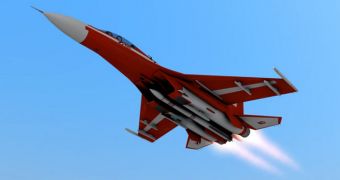NanoLauncher is a start-up company that came up with a brilliant idea on how to get small satellites to low-Earth orbit. It plans to use decommissioned military aircraft as a platform for launch from high above the surface of the planet.
The company is filling a void that exists in the space industry today, and namely the absence of small delivery systems capable of taking satellites only a few kilograms in weight into orbit.
At this point, universities, research institutes and companies that want to send their nanosatellites into space need to wait for an opening on delivery systems carrying larger payloads, such as military and communications satellites.
This means that their spacecrafts are launched as secondary payloads. The entities backing up the launch have no control over when their instrument will take off, and this gives birth to numerous other issues.
But plugging this hole is possible with the new approach NanoLauncher proposes. “Getting reasonable cost access [to orbit] for small spacecraft is really critical,” explains Kris Kimel.
“We need to get that kind of access that allows us to relentlessly innovate and quite frankly to fail more,” adds the official, who is the president of the private-public consortium Kentucky Space.
NanoLauncher opted to use existing technologies, rather than create its own. It also plans to use dedicated spaceports for its launches, rather than constructing its own facility.
At first, its aircrafts will take off from the NASA Kennedy Space Center, in Florida, the Wallops Flight Facility, in Virginia and the Vandenberg Air Force Base (VAFB), in California, Space reports.
“We're riding the nanosatellite wave. It's not an illusion,” says the president of SpaceWorks Commercial, A.C. Charania. This company is working with three Japanese firms to get NanoLauncher into the satellite business.
“Smaller things in the 21st century are capable of doing so much more,” Charania adds, referring to the nanosatellites that the company will send to orbit.
CubeSat is now the most popular shape for a small satellites. It looks like a small cube, about 3.9 centimeters on each side, and weighing no more than 3 pounds.
This design was become increasingly popular since 2003, when the first one flew, and demonstrated that valid science could be done in such a small payload.

 14 DAY TRIAL //
14 DAY TRIAL //